Why is the reading of a mercury barometer always less than actual pressure?
To understand why the reading of a mercury barometer is always less than the actual atmospheric pressure, we can break down the explanation into clear steps:
1. Understanding the Barometer: A mercury barometer measures atmospheric pressure using a column of mercury in a glass tube. The height of the mercury column is balanced by the atmospheric pressure acting on the surface of the mercury in the reservoir.
2. Standard Height of Mercury: Under standard atmospheric conditions, the height of the mercury column in the barometer is typically 76 cm, which corresponds to an atmospheric pressure of approximately 101325 Pa.
3. Surface Tension Effect: The key reason for the discrepancy in the reading is the effect of surface tension. Mercury has a high surface tension, which causes the mercury to adhere to the walls of the glass tube.
4. Depression of Mercury Column: Due to surface tension, the mercury in the tube is depressed at the surface where it contacts the glass. This depression causes the height of the mercury column to be lower than it would be if there were no surface tension.
5. Observed vs. Actual Height: Because of this depression, the observed height of the mercury column in the barometer is less than the actual height that would be present if surface tension were not a factor. Therefore, the reading on the barometer reflects this lower height.
6. Conclusion: As a result, the reading of the mercury barometer is always less than the actual atmospheric pressure due to the influence of surface tension on the mercury column.
Final Answer:
The reading of a mercury barometer is always less than the actual atmospheric pressure because surface tension causes the mercury to be depressed in the tube, leading to a lower observed height of the mercury column than the actual height.
---
The reading of a mercury barometer is always less than the actual atmospheric pressure because surface tension causes the mercury to be depressed in the tube, leading to a lower observed height of the mercury column than the actual height.
Topper's Solved these Questions
- Mechanical Properties of fluidsBOOK - SL ARORACHAPTER - Mechanical Properties of fluidsEXERCISE - Exercise
459 Videos
- Mathematical toolsBOOK - SL ARORACHAPTER - Mathematical toolsEXERCISE - Exercise
20 Videos
- Mechanical Properties of SolidsBOOK - SL ARORACHAPTER - Mechanical Properties of SolidsEXERCISE - Example
113 Videos
Similar Questions
Knowledge Check
The mercury barometer was invented by
ACelsiusBFahrenheitCTorricelliDBernoulliThe mercury barometer was invented by:
AArchimedesBToricelliCFahrenheitDCelciusA barometer is an instrument that is used for the measurement of pressure The construction of the barometer is as follows:
A thin narrow calibrated capillary tube is filled to the brim with a liquid such as mercury and is inverted into a through filled with the same fluid Now depending on the external atmospheric pressure the level of the inside capillary comes to rest, then the net forces on the column should be balanced Applying force balance we get Patm×A=m×g
(A is the cross-sectional area of the capillary tube) if ρ is the density of the fluid, then m=ρ×g×h
(h is the height to which mercury has risen in the capillary)
Hence Patm×A=(ρ×g×h)×AorPatm=ρgh
Faulty Barometer:
An ideal barometer will show a correct reading only if the space above the mercury column is vacuum but in case if some gas column is trapped in the space above the mercury column then the barometer is classified as a faulty barometer. The reading of such a barometer will be less than the true pressure

For such a faulty barometer
P0A=mg+PgasA
P0=ρhg+Pgas
or ρgh=P0−Pgas
A tube closed at one end is dipped in mercury as shown in figure such that the closed surface coincides with the mercury level in the container By how much length of the tube should be extended such that the level of Hg in the tube is 5 cm below the mercury level inside the container? (Assume temperature remains constant)
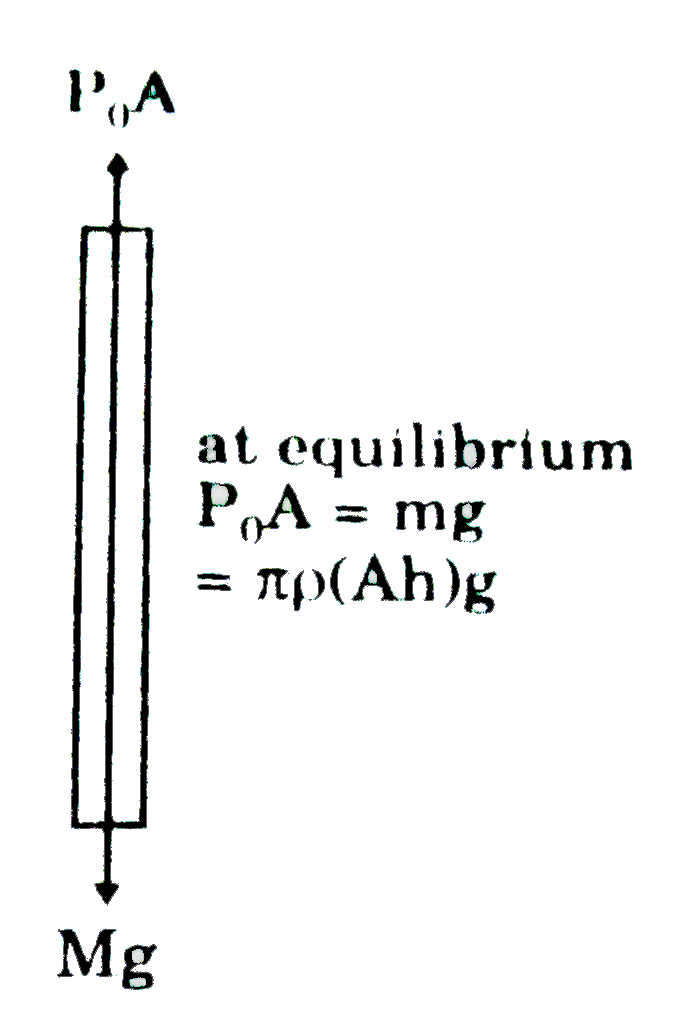
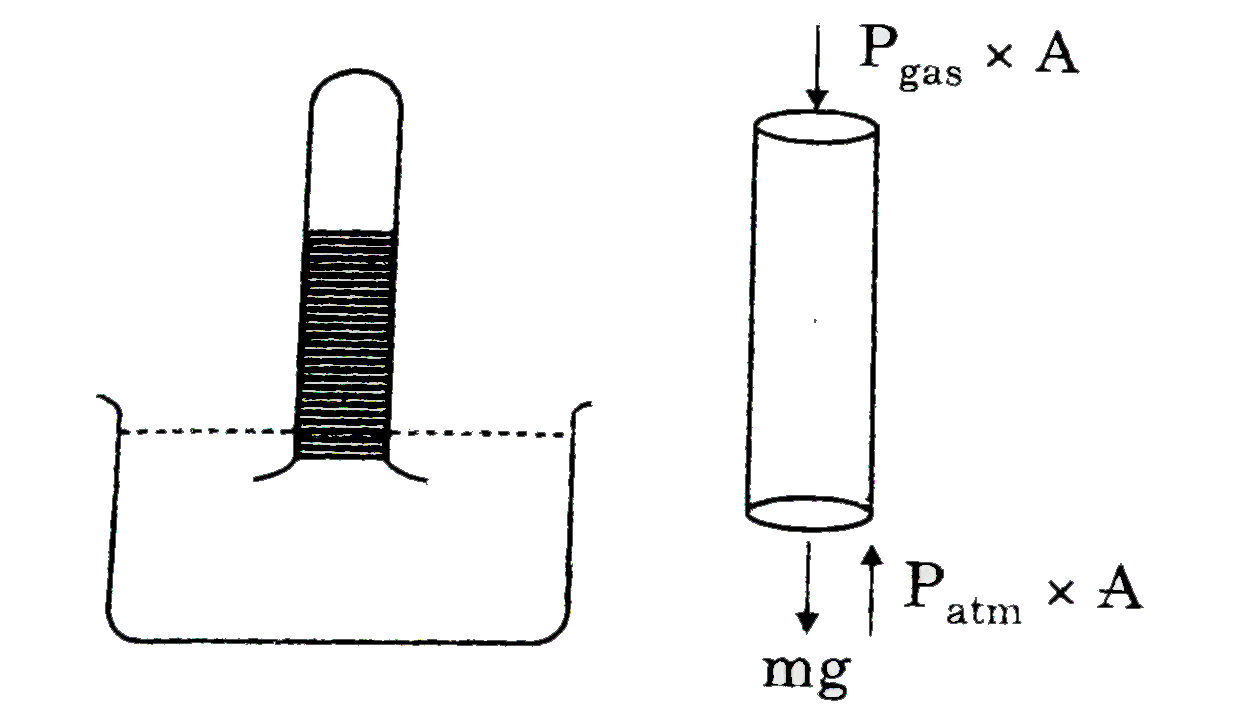
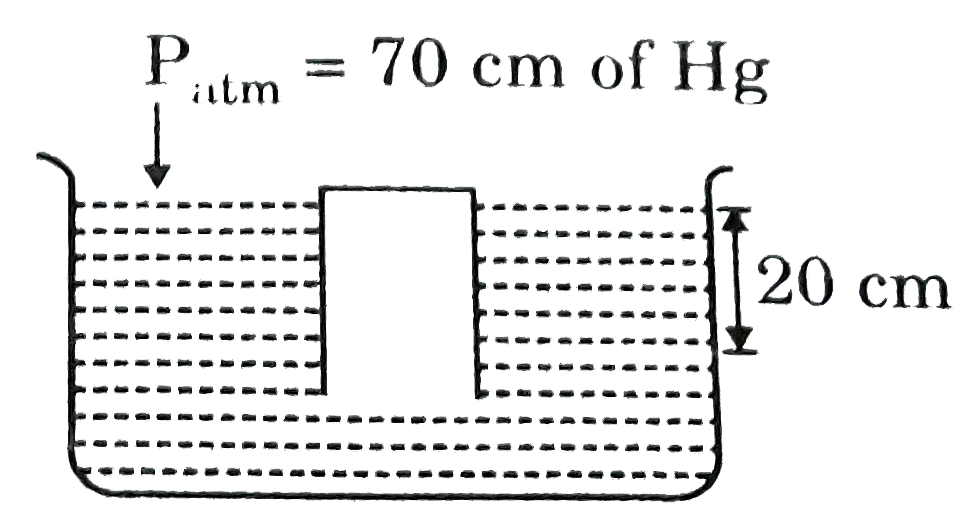 A18 cmB19 cmC24 cmD30 cm
A18 cmB19 cmC24 cmD30 cm
Why is the work output of a machine always less than the work input?
View SolutionWhat are the disadvantages of a simple mercury barometer ?
View SolutionWhat are the disadvantages of a simple mercury barometer ?
View SolutionA barometer is an instrument that is used for the measurement of pressure The construction of the barometer is as follows:
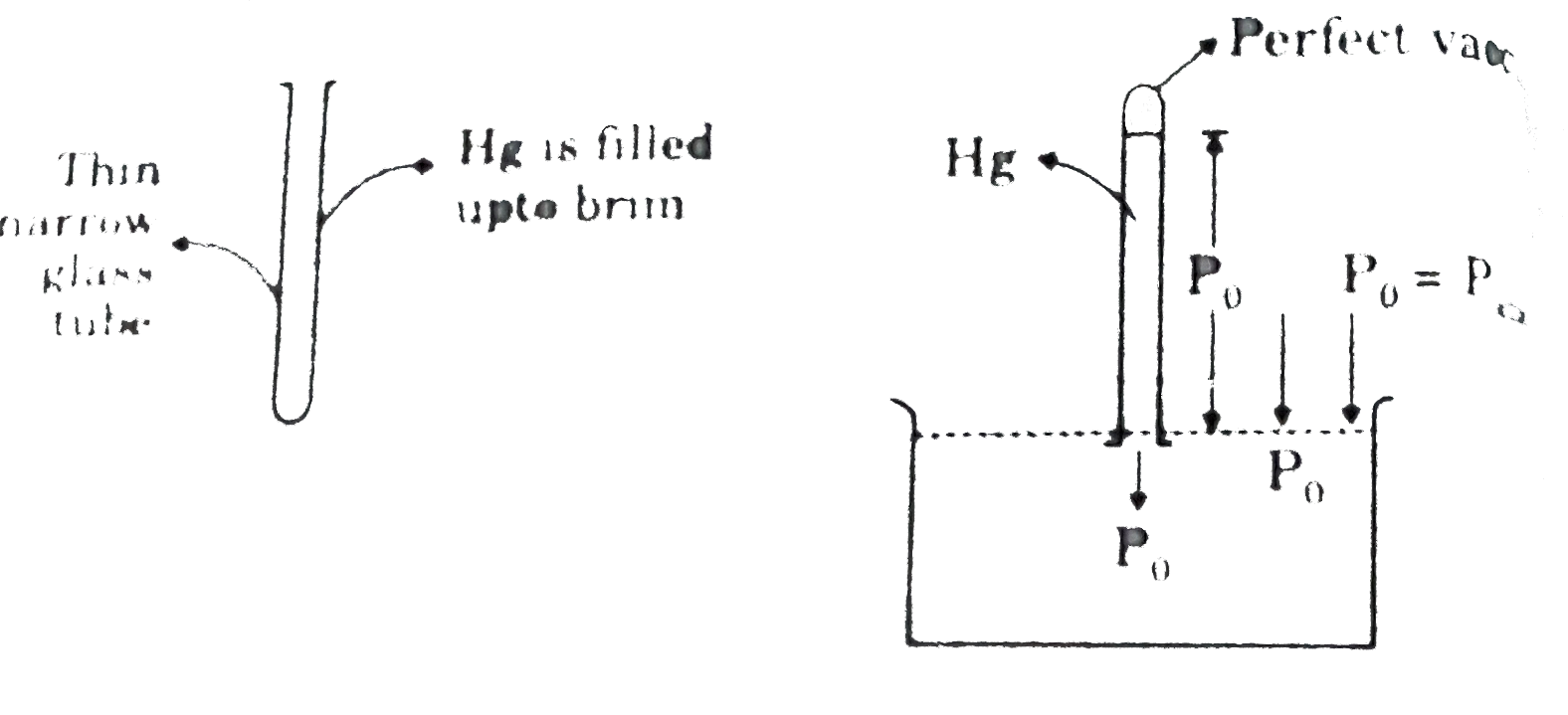
A thin narrow calibrated capillary tube is filled to the brim with a liquid such as mercury and is inverted into a through filled with the same fluid Now depending on the external atmospheric pressure the level of the inside capillary comes to rest, then the net forces on the column should be balanced Applying force balance we get Patm×A=m×g
(A is the cross-sectional area of the capillary tube) if ρ is the density of the fluid, then m=ρ×g×h
(h is the height to which mercury has risen in the capillary)
Hence Patm×A=(ρ×g×h)×AorPatm=ρgh
Faulty Barometer:
An ideal barometer will show a correct reading only if the space above the mercury column is vacuum but in case if some gas column is trapped in the space above the mercury column then the barometer is classified as a faulty barometer. The reading of such a barometer will be less than the true pressure
For such a faulty barometer
P0A=mg+PgasA
P0=ρhg+Pgas
or ρgh=P0−Pgas
If the tube shown below is placed vertically with the open and upward then the length of the air column will be (Assume temperature remains constant)
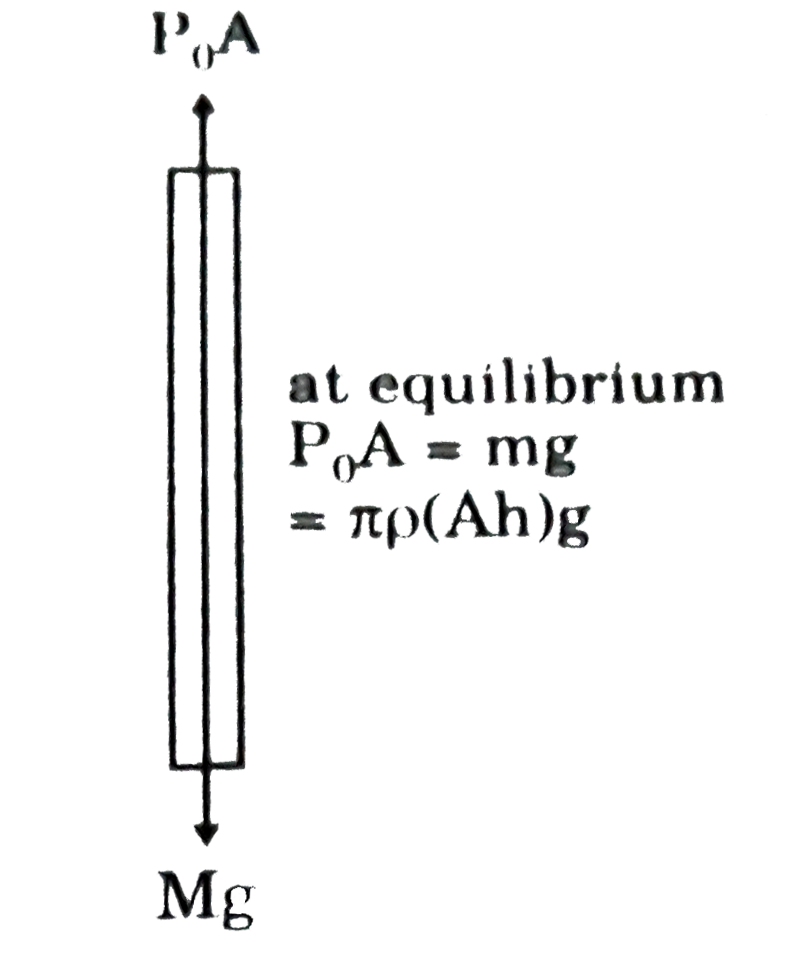
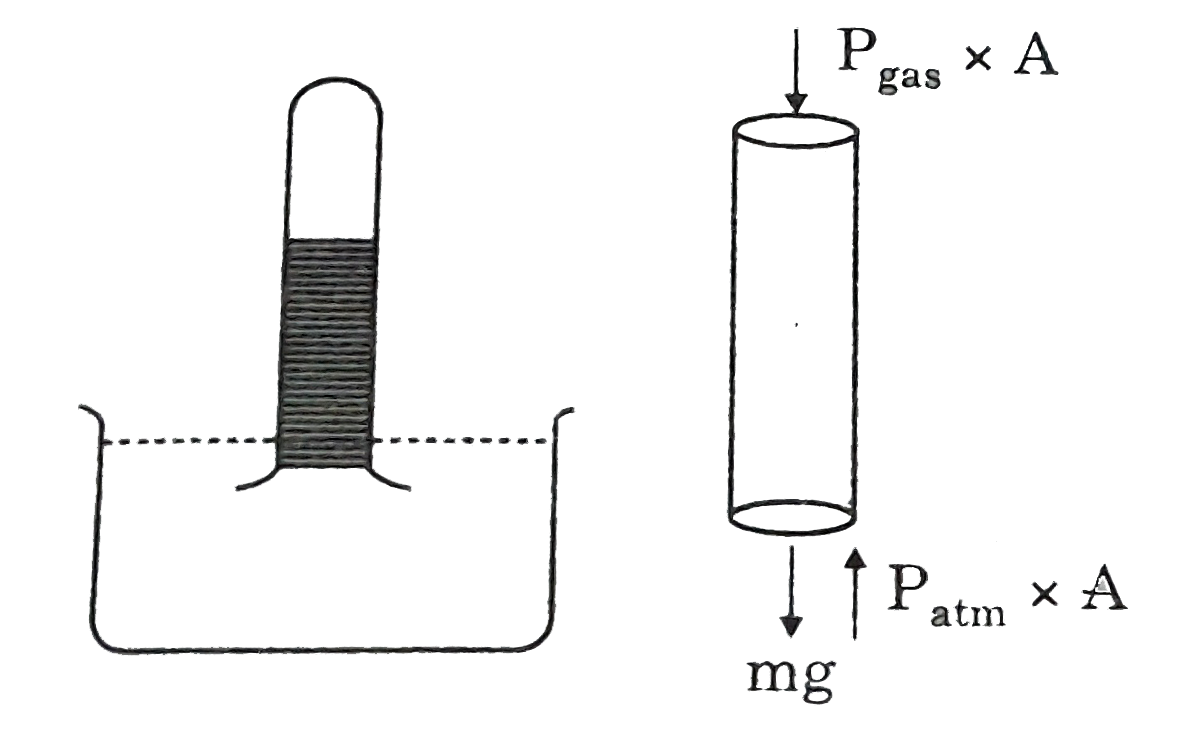

View SolutionThe height of mercury barometer is h when the atmospheic pressure is 105Pa. The pressure at x in the shown diagram is
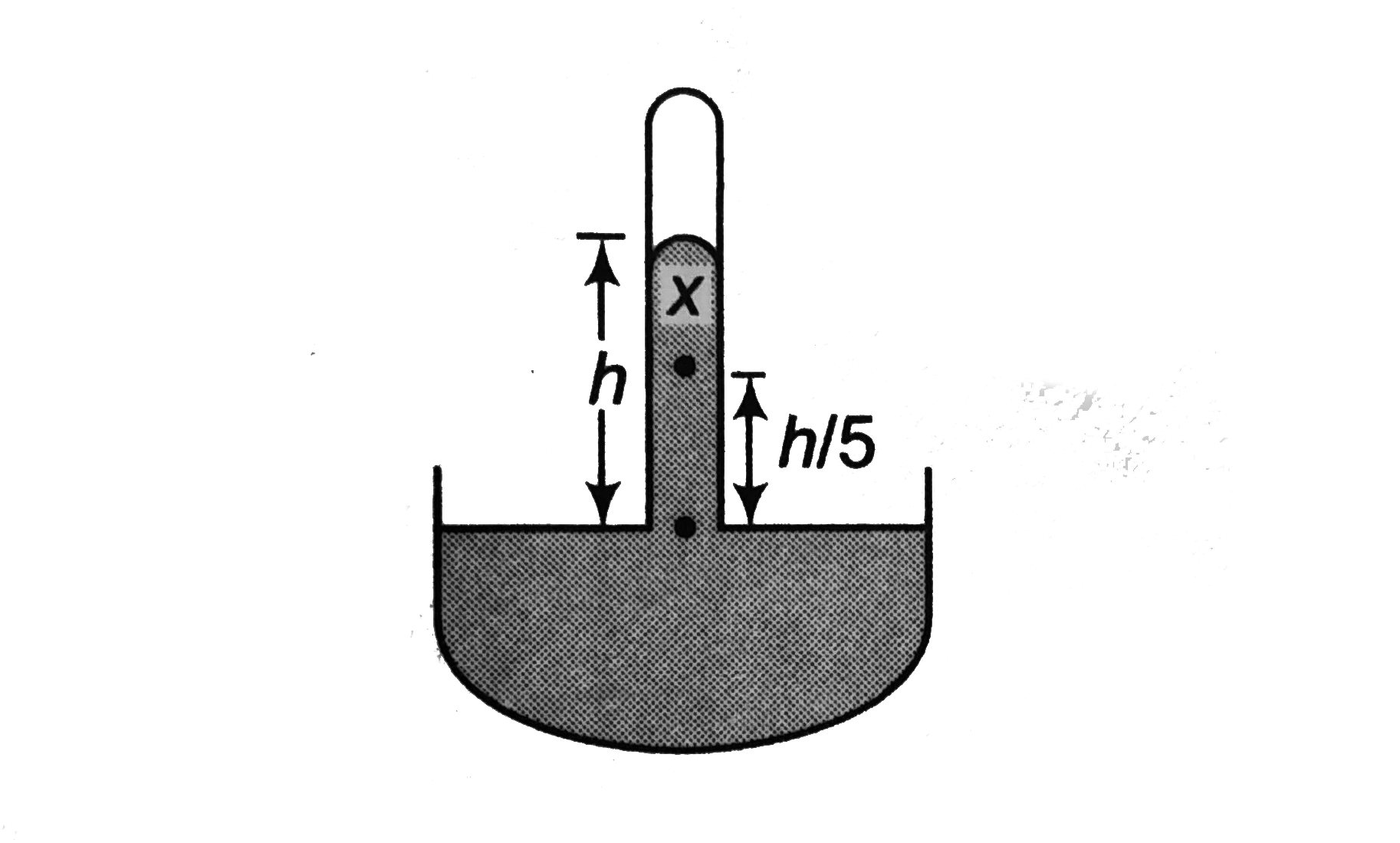
View Solution
